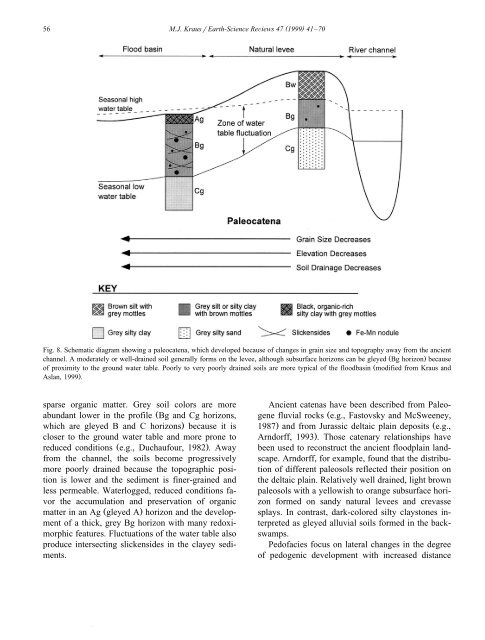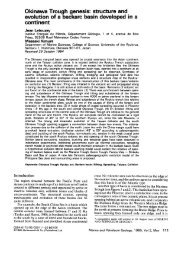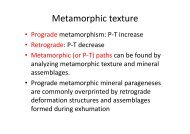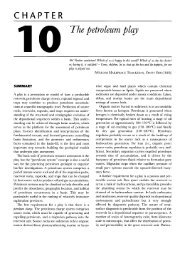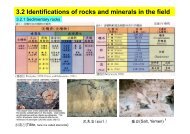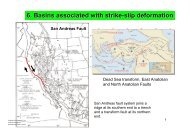Paleosols in clastic sedimentary rocks: their geologic applications
Paleosols in clastic sedimentary rocks: their geologic applications
Paleosols in clastic sedimentary rocks: their geologic applications
- No tags were found...
You also want an ePaper? Increase the reach of your titles
YUMPU automatically turns print PDFs into web optimized ePapers that Google loves.
56( )M.J. KrausrEarth-Science ReÕiews 47 1999 41–70Fig. 8. Schematic diagram show<strong>in</strong>g a paleocatena, which developed because of changes <strong>in</strong> gra<strong>in</strong> size and topography away from the ancientchannel. A moderately or well-dra<strong>in</strong>ed soil generally forms on the levee, although subsurface horizons can be gleyed Ž Bg horizon.becauseof proximity to the ground water table. Poorly to very poorly dra<strong>in</strong>ed soils are more typical of the floodbas<strong>in</strong> Žmodified from Kraus andAslan, 1999 ..sparse organic matter. Grey soil colors are moreabundant lower <strong>in</strong> the profile ŽBg and Cg horizons,which are gleyed B and C horizons.because it iscloser to the ground water table and more prone toreduced conditions Ž e.g., Duchaufour, 1982 .. Awayfrom the channel, the soils become progressivelymore poorly dra<strong>in</strong>ed because the topographic positionis lower and the sediment is f<strong>in</strong>er-gra<strong>in</strong>ed andless permeable. Waterlogged, reduced conditions favorthe accumulation and preservation of organicmatter <strong>in</strong> an Ag Ž gleyed A.horizon and the developmentof a thick, grey Bg horizon with many redoximorphicfeatures. Fluctuations of the water table alsoproduce <strong>in</strong>tersect<strong>in</strong>g slickensides <strong>in</strong> the clayey sediments.Ancient catenas have been described from Paleogenefluvial <strong>rocks</strong> Že.g., Fastovsky and McSweeney,1987. and from Jurassic deltaic pla<strong>in</strong> deposits Že.g.,Arndorff, 1993 .. Those catenary relationships havebeen used to reconstruct the ancient floodpla<strong>in</strong> landscape.Arndorff, for example, found that the distributionof different paleosols reflected <strong>their</strong> position onthe deltaic pla<strong>in</strong>. Relatively well dra<strong>in</strong>ed, light brownpaleosols with a yellowish to orange subsurface horizonformed on sandy natural levees and crevassesplays. In contrast, dark-colored silty claystones <strong>in</strong>terpretedas gleyed alluvial soils formed <strong>in</strong> the backswamps.Pedofacies focus on lateral changes <strong>in</strong> the degreeof pedogenic development with <strong>in</strong>creased distance


